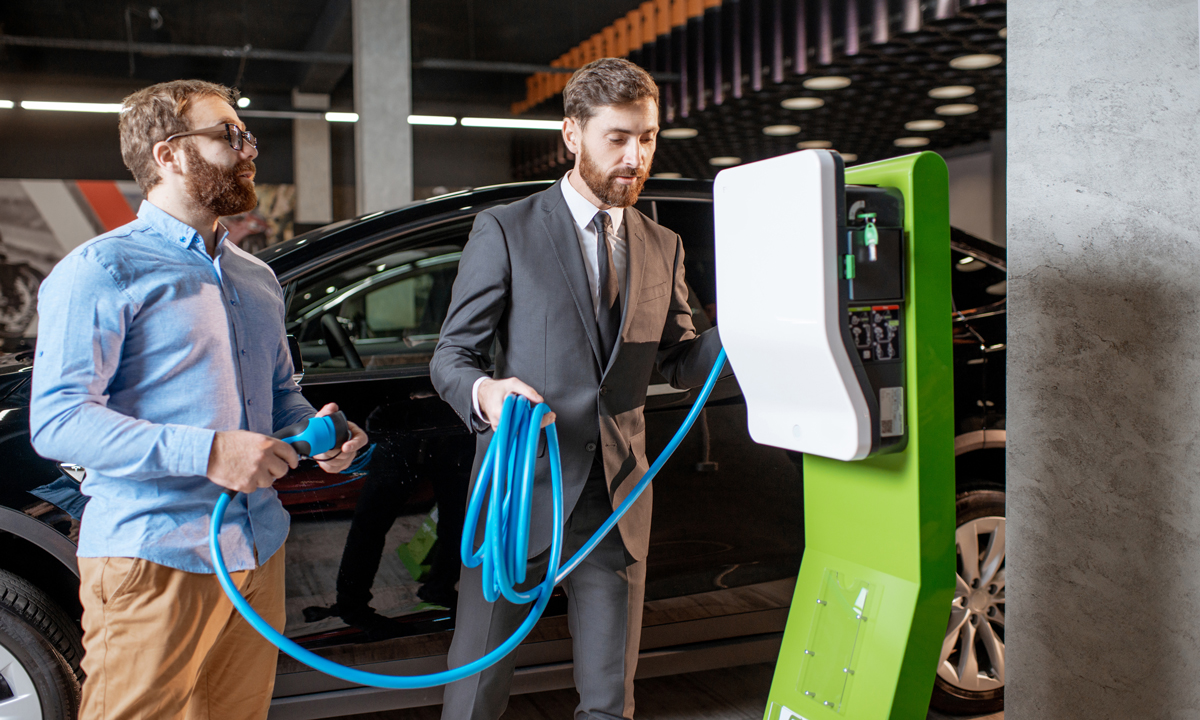
To really serve their customers well, dealers need to understand the home charging options too.
For nearly a decade, charging an electric vehicle (EV) or a plug-in hybrid electric vehicle (PHEV) at home has remained relatively unchanged.
As the new generation of EVs are starting to hit the market, it’s bringing something new to the home charging front. Understanding this shift is key to ensuring that EV buyers are well equipped for what lies ahead.
For many years, the vast majority of vehicles came with a Level 1 (120V) charging cable. Most EV drivers would keep this cable in their trunk for use when topping up when visiting Grandma.
For their daily home use, most got their electrician to wire up a 240V socket and they would then purchase a Level 2 charging station which they would plug into that 240V outlet to increase their charging speed at home.
Generally speaking, most PHEVs could charge at a rate of up to 3 to 4 kW on a Level 2 charging station and most EVs could charge at rates up to about 7kW on a sufficiently powerful Level 2 charging station.
Recently new EV models, however, have started to make their way into Canadian dealerships with standard Level 2 charging rates of up to 10 or 11kW. That’s up to 50 per cent faster charging at home!
But does that mean that dealerships should, from now on, push all EV drivers to install 11kW home chargers? What about existing EV owners who are upgrading their current car for the latest model?
I think doing so would be premature.
First off, let’s look at the “real-life” daily advantage of an 11kW charger over a 7.2kW charger (the most common maximum power output installed by EV drivers to date).
Understanding this shift is key to ensuring that EV buyers are well equipped for what lies ahead.
Let’s use an average person driving an EV with 400km of range and a 60kWh battery (an average battery size these days). If they do a 100km round trip daily to go to the office and back and charge right away when they get home at 6pm:
- On a 7.2kW charger their car would be fully charged (go from 300km of available range to 400km of available range) by approximately 8:30pm;
- On a 11kW charger their car would be fully charged (go from 300km of available range to 400km of available range) by approximately 7:40pm.
Let’s be honest, for most EV drivers having their car fully charged by the first or second intermission of their favorite NHL team’s hockey game makes no meaningful difference in their lives.
Therefore, while a faster charging rate can be a pleasant thing to have at home, on a daily basis, it won’t be very perceivable for most. What’s more, 11kW chargers typically cost more to buy and also to install than a 7.2kW unit.
The extra installation costs come from the fact that 11kW chargers demand higher amperage and therefore require larger cables and a larger breaker in the electrical panel.
For some EV drivers the larger breaker in the panel can also be problematic. If their electrical panel is already almost fully loaded, they may not have the room to add the large 60A breaker typically required by 11kW chargers.
Lastly, there is currently only a limited number of 11kW home charger models on the market, and the 11kW home chargers currently on the market may not have the features a specific EV driver is looking for.
Hence, while 11kW home charging is a good step forward, the real-life impact may be less significant that most would expect.
When adding to this the extra costs and the potential limiting constraints, it remains important for dealers to understand their customer’s situation before blindly pushing them to equip themselves with a 11kW home charger.



